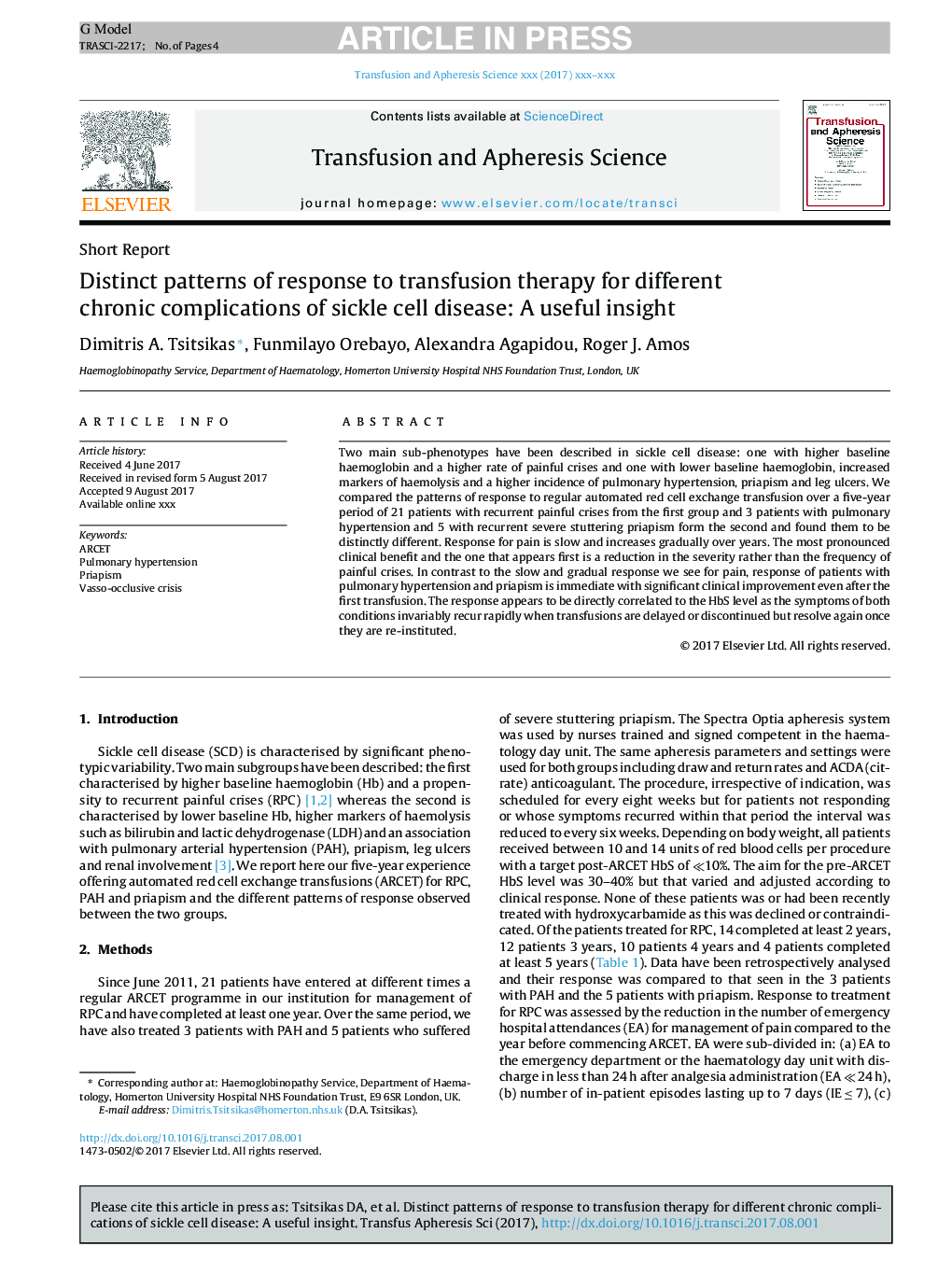| Article ID | Journal | Published Year | Pages | File Type |
|---|---|---|---|---|
| 8735145 | Transfusion and Apheresis Science | 2017 | 4 Pages |
Abstract
Two main sub-phenotypes have been described in sickle cell disease: one with higher baseline haemoglobin and a higher rate of painful crises and one with lower baseline haemoglobin, increased markers of haemolysis and a higher incidence of pulmonary hypertension, priapism and leg ulcers. We compared the patterns of response to regular automated red cell exchange transfusion over a five-year period of 21 patients with recurrent painful crises from the first group and 3 patients with pulmonary hypertension and 5 with recurrent severe stuttering priapism form the second and found them to be distinctly different. Response for pain is slow and increases gradually over years. The most pronounced clinical benefit and the one that appears first is a reduction in the severity rather than the frequency of painful crises. In contrast to the slow and gradual response we see for pain, response of patients with pulmonary hypertension and priapism is immediate with significant clinical improvement even after the first transfusion. The response appears to be directly correlated to the HbS level as the symptoms of both conditions invariably recur rapidly when transfusions are delayed or discontinued but resolve again once they are re-instituted.
Keywords
Related Topics
Health Sciences
Medicine and Dentistry
Hematology
Authors
Dimitris A. Tsitsikas, Funmilayo Orebayo, Alexandra Agapidou, Roger J. Amos,
